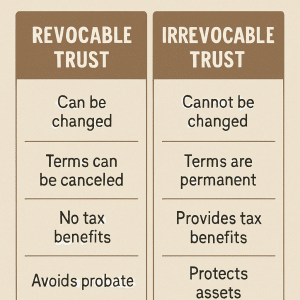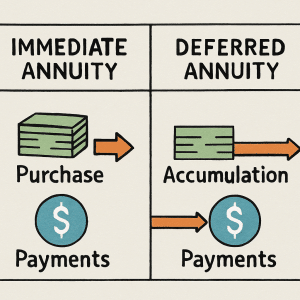10 Tax Planning Tips to Help You Wrap Up 2020
As we get closer to year-end, many people are concerned about taxes and the possibility of having to pay higher taxes next year. In fact, in a recent survey,* higher taxes were nearly the top post-election concern (31% were concerned), second only to the spread of COVID-19 (52% concerned) and tied with COVID-19 vaccine mandate (31% concerned).
With a significant amount of federal government legislation passed this year that may have affected your taxes as an individual, family, or business owner, it makes sense to understand what’s changed. While this article does not provide legal or tax advice — you should consult with your accountant or tax attorney for that — we’ve highlighted a few tips to consider as you plan for your 2020 tax return.
Tax Tips For individuals:
1. If you want to take a coronavirus-related distribution, you’ll need to do it before December 30, 2020.
Thanks to the CARES Act, if you’re eligible, you can take a distribution of up to $100,000 from your retirement plan (if permitted) or IRA, no matter what your age, without the 10% federal tax penalty. You’re allowed to include the distribution in your taxable income over the course of the next 3 years, in even amounts, or all at once in 2020. If you repay the distribution within 3 years, you may be able to recoup any taxes you paid on it.
2. If your income is going to be lower this year, consider deferring deductions until 2021.
Between the CARES Act, the Tax Cuts and Jobs Act, and potential job losses, you may be looking at lower income than usual this year. If so, consider recognizing short- and long-term capital gains and other taxable income this year and putting off deductions until next year.
3. If you didn’t take a required minimum distribution (RMD) this year, think about what that will mean for you next year.
Under the CARES Act, if you are retired or inherited an IRA and typically take a required minimum distribution, you didn’t have to take the RMD this year. That means you’ll need to work with your accountant to determine your required amount for next year and how that may affect your taxes.
4. Plan for making retirement plan contributions in 2021.
Each year, based on changes in the Consumer Price Index (CPI-U), the amount you can contribute to your retirement plan may increase. Stay tuned for further updates once the IRS publishes the contribution limits for 2021.
5. Take advantage of the 2020 gift tax exclusion of $15,000 and the $11,580,000 per person lifetime applicable exclusion amount.
In 2020, you can transfer up to $15,000 to any number of individuals without paying gift taxes on the amount. During your lifetime you can gift up to $11,580,000 (known as the applicable exclusion amount), in addition to the $15,000 per person. You’ll need to make these gifts by December 31, 2020. Due to the uncertainty of the estate planning credit, it may make sense to gift more money in 2020 if you can.
6. Some people over age 70½ can make tax-deductible IRA contributions.
Starting in 2020, certain individuals and married couples over age 70½ can make tax-deductible IRA contributions, if your plan permits. You must have sufficient compensation or earned income in 2020 to make a contribution and not be an active member of a qualified plan. Also, according to the SECURE Act, the RMD age was extended to age 72, instead of 70 ½ for certain people, so make sure you understand what rules apply to you.
Tax Tips For business owners and plan sponsors:
7. If you’ve got long-term, part-time employees, you will need to keep track of their hours beginning in 2021.
Under the SECURE Act, part-time employees working at least 500 hours over 3 consecutive years must be allowed to make salary deferrals to the 401(k) plan starting January 1, 2024.
8. If you’re thinking about setting up a Safe Harbor plan, you can still do so this year.
Unlike previous years, in 2020 and beyond, you can establish a Safe Harbor 401(k) plan that automatically satisfies nondiscrimination testing during and even after the end of the year. This new flexibility under the SECURE Act only applies to Safe Harbor 401(k) plans using employer nonelective contributions. You have until November 30 to set up 3% nonelective contributions or until the end of 2021 to set up a plan with 4% nonelective contributions.
9. You can set up a defined benefit plan for this year, after year-end.
The SECURE Act extended the deadline to set up an employer-sponsored defined benefit plan for this year until the due date of your tax return, plus extensions.
10. Prepare for year-end compliance testing and plan participant notices.
If you’re a business owner with a retirement plan, you’ll need to start getting ready for year-end compliance testing and plan participant notices. Talk to your recordkeeper or third-party administrator to make sure you’re on track.
If you have questions on any of these ideas, please contact your accountant, tax attorney, or financial professional for advice.
*Source: Equitable Q3 Consumer Pulse Learnings & Implications Study, Oct. 2020.
This informational and educational article does not offer or constitute financial, legal, tax, or accounting advice. Your unique needs, goals, and circumstances require the individualized attention of your own professional advisors. Equitable Financial Life Insurance Company and its affiliates including My Annuity Store, Inc. do not provide tax, legal, or accounting advice or services.













